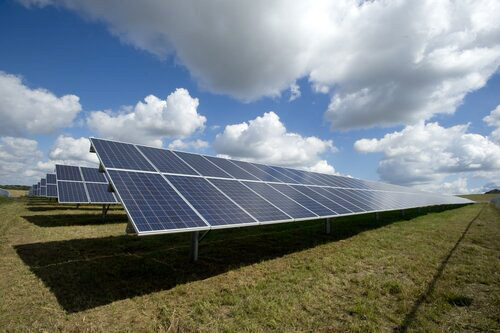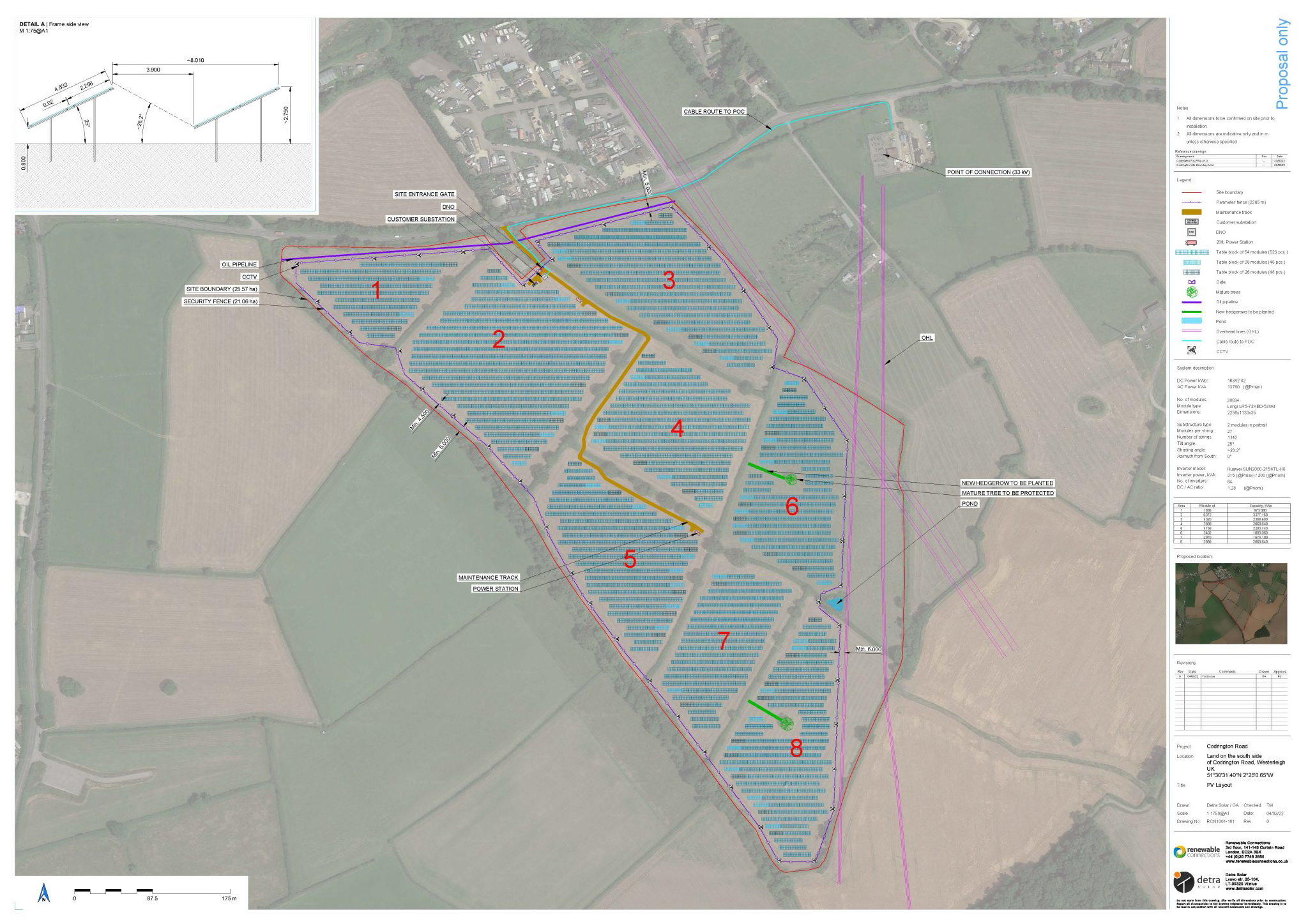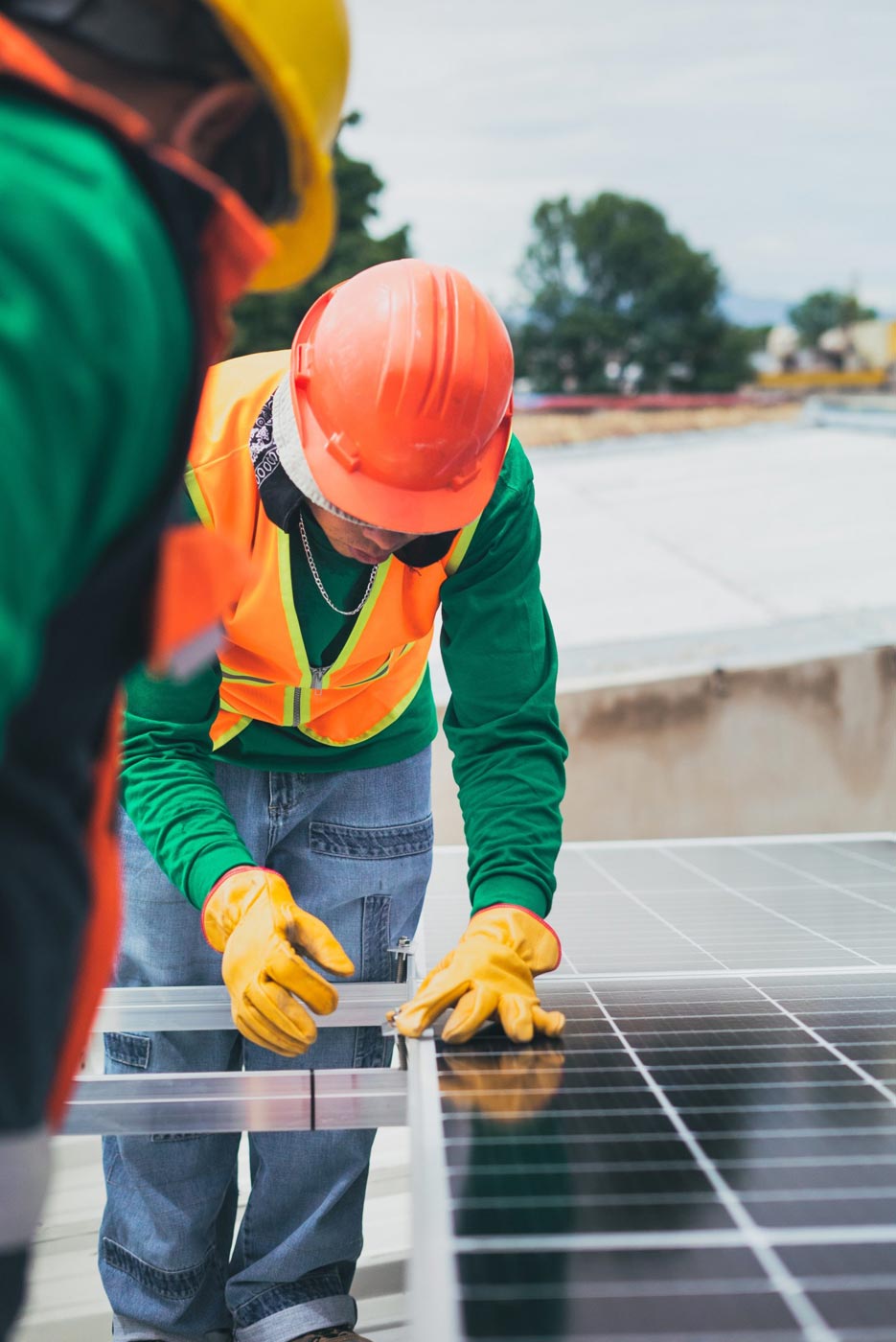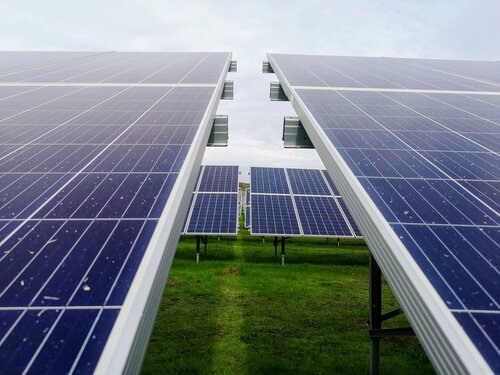CODRINGTON ROAD
SOLAR FARM
Renewable Connections has received consent for a solar energy farm near Wapley, South Gloucestershire up to 18.75 MW. Once operational, the project would supply enough power for up to 4,400 homes and make a valuable contribution towards tackling the climate emergency in Gloucestershire and the UK.
South Gloucestershire Council declared a climate emergency in May 2019 and pledged to become carbon neutral by 2030. Renewable Connections supports the Council’s commitment to target 6% of the Council’s energy to be provided by locally based renewables by 2028, 25% by 2036 and ultimately 100% of energy by 2050 as part of the UK100 Pledge.

QUICK FACTS
7,700 tonnes
of CO2 saved annually
17,500 megawatt hours supplied each year
Equivalent annual energy needs of up to 4,400 homes
Land enhanced for native wildlife
LOCATION
Codrington Road Solar Farm comprises agricultural land located close to the hamlet of Wapley and the nearby village of Codrington in South Gloucestershire. The nearest population centres are the Bristol suburb of Lyde Green to the west and the towns of Coalpit Heath to the north.
The site, whilst within the Green Belt, is not covered by any other national or international designations or contain assets that relate to biodiversity(e.g. Special Protection Areas), landscape (e.g. Area of Outstanding Natural Beauty) or cultural heritage (e.g. Scheduled Monuments). Nor are there any of these assets adjacent to the Site. In terms of topography, the site slopes gently southwards and is surrounded by dense hedgerows on all sides, meaning that public views towards the site from the immediate vicinity are limited.
Codrington Road Solar Farm would includes a package of landscape, ecological and biodiversity benefits. Existing hedgerows surrounding the site would be bolstered with additional hedgerow and tree planting provided throughout the site in line with specialist ecological advice. The new hedgerows would deliver biodiversity enhancements by providing green ecological corridors and generally the site would enhance or provide new habitats for a wide range of insects, birds and animals.
OUR PROPOSALS
The solar farm would has a capacity of up to 18.75MW and will be operational for up to 40 years. After this time, the solar panels would be removed and the land restored to its previous condition, but with improved soil health and biodiversity levels. The power generated will be exported to the grid via a short cable run under the A46 to the adjacent substation site.
The site, when operational will use bifacial solar panels, which collect light both on the top and bottom faces as sunlight reflected from the grass surface under the solar framework is captured. Bifacial yield-gain can reach +30 percent compared to traditional single faced systems. The panels would be fixed onto a fixed mounting system, running east to west and orientated to the south to maximise solar irradiation absorption. The total height of the panels is expected to be just below 3 metres and the arrays would be set within a 2 metre high stock-proof fence. Combined with the existing and proposed vegetation throughout the site, public views onto the solar arrays are anticipated to be very limited.
The solar panels and other infrastructure would be set within the existing field pattern, with field margins (hedgerows and ditches) and boundary vegetation retained and enhanced. The design would be assessed by planning and environmental specialists in terms of, amongst other matters, landscape and visual, cultural heritage, ecology, hydrology and traffic considerations. The design of the site may update as it develops in line with specialist advice in order to achieve an outcome that maximises environmental benefits.
The construction phase is expected to last for approximately 24 weeks.
PROJECT TIMELINE
STAGE 1
Site selection
2021
STAGE 2
Preliminary Surveys
Winter 2021
STAGE 3
Pre-application
Spring 2022
STAGE 4
Community Consultation
Spring 2022
STAGE 5
Submission
Summer 2022
STAGE 6
Construction
2025+
THE NEED FOR THE PROJECT
Following the Government’s declaration of an “Environment and Climate Emergency” in May 2019, the Committee on Climate Change (CCC) advised that to meet ‘Net Zero’ targets, the UK will require substantial amounts of new, low carbon power sources to be built before 2050, up to four times that of today’s levels.
South Gloucestershire Council declared a climate emergency in May 2019 and pledged to become carbon neutral by 2030. Renewable Connections supports the Council’s commitment to target 6% of the Council’s energy to be provided by locally based renewables by 2028, 25% by 2036 and ultimately 100% of energy by 2050 as part of the UK100 Pledge.
Solar is one of the cleanest, lowest cost forms of energy available. Codrington Road Solar Farm would make a meaningful contribution to Gloucestershire’s energy needs by delivering green energy for up to 4,400 homes annually. Over the lifetime of the project, it would save an estimated 7,700 tonnes of CO2 from being emitted in comparison to traditional non-renewable energy supply.
FAQ’s
Why this location?
This site has been identified following extensive site selection process across Gloucestershire which took into account environmental designations, local electricity network access and capacity, the physical characteristics of the site, and a supportive landowner who is committed to sustainability, environmental stewardship and community benefits.
Will there be any impacts on local roads?
For a period of approximately 6 months during construction, there will be deliveries of equipment to site. Renewable Connections will put in place measures to manage impacts of construction traffic and these measures will be included in a Construction Traffic Management Plan that will submitted with the planning application. There will be infrequent maintenance visits to the site during operation.
Will there be any permanent impact?
Solar farms are temporary and the land will be fully reinstated to farmland once the equipment is removed at the end of the project life.
Does solar pose a health risk?
No – solar is a passive technology which doesn’t produce any harmful by-products.
How long will the project be there?
The development proposes a life span of up to 40 years. No later than this, the development would be decommissioned, and the site returned to solely agricultural use. A decommissioning plan will be provided with the planning submission.
Are solar farms noisy?
No – solar farms are not noisy, producing no more than normal background levels of sound similar to wind or distant traffic beyond the site boundary.
What are the benefits to the local community?
Renewable Connections is committed to maximising benefits for the local community including establishing a community benefit fund. As well the environmental benefits of producing low carbon green energy, the project can improve local biodiversity via wildflower meadow planting, hedgerow infilling, as well as other ecological enhancement measures.
GET IN TOUCH
codringtonroadsolar@renewableconnections.co.uk
Telephone: 0800 254 5011
Codrington Road Solar Farm,
LDN:W,
3 Noble Street,
London,
EC2V 7EE
Renewable Connections is committed to respecting your privacy and to complying with UK data protection and privacy laws. Our privacy policy explains how we collect, use, share and protect personal information.


